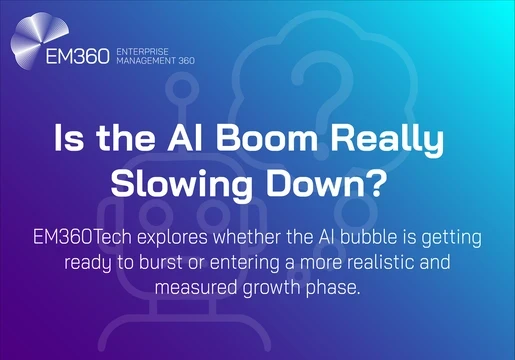Often, large language models (LLMs) can face challenges in providing accurate or nuanced answers to highly subject-specific prompts.
This is because they are trained on massive datasets with a wide variety of subjects, which can lead to a broader, more general understanding of language rather than deep expertise in specific domains.
This is where small language models (SLMs) come into play.
According to Grand View Research, the global small language model market size was estimated at USD 7.76 billion in 2023 and is projected to grow at a CAGR of 15.6% from 2024 to 2030.
This article tells you everything you need to know about small language models, what it is, why use them, their advantages and use cases.

What are Small Language Models (SLMs)?
Small language models (SLM) are a type of artificial intelligence model trained on a relatively small amount of data for generative AI applications. In contrast to large language models (LLMs), SLMs are smaller and less complex. However, like LLms, SLMs have the capability to process, comprehend and generate human language content.
According to IBM, SLMs range from a few million to a few billion parameters. These parameters are internal variables like weights and biases required to train a language model. It affects the outcome of a machine learning model from its behavior to performance.
Imagine a gen AI chatbot such as the new Phi-4 developed by Microsoft which is designed for complex reasoning. This model has been trained on small datasets with a simpler architecture, hence, it is an SLM. It requires less computational power and performs a variety of natural language tasks such as text generation, translation, and question-answering.
Why Use Small Language Models (SLMs)?
Small language models (SLMs) can be used to develop gen AI specialising in specific tasks. Despite being trained on a relatively small dataset compared to LLMs, they can be very efficient and excel at a specific type of genre.

For this reason, SLMs might require more focused training when using limited resources. Essentially, SLMs prioritise specific task performance over broader capabilities. Often organisations deploy a combination of both SLMs and LLMs for specific requirements.
Key Advantages of Small Language Models (SLMs)
1. Versatility
SLMs can be fine-tuned relatively easily than LLMs, making it more versatile. The fine-tuning process allows developers to adapt a pre-trained model to a specific task or domain by training it on a smaller model.
SLMs are great for such capabilities because they cater to specifics as specialised models. Since, they are trained on small datasets, they can be calibrated on datasets like medical articles. Developers can ask it to retrieve specific medical information post-training.
This adaptability makes SLMs valuable for a wide range of applications, even with their smaller size and simpler architecture.
Microsoft says that fine-tuning SLMs for specific industries, such as customer service, healthcare, or finance, makes it possible for businesses to choose these models for their efficiency and specialization while at the same time benefiting from their computational frugality.
2. Less Complex
SLMs are less complex than their larger counterparts because they are trained on smaller datasets, unlike LLMs. This reduces the parameter count tremendously. Not only does that allow the model to function faster but it can be trained faster, more accurately and have lower memory requirements.
As a result, SLMs are usually more effective because of their specialised focus. Its key advantage is that it can deployed on devices with limited resources like mobile phones and embedded systems.
Basically, it can perform well on devices that don't have a lot of computational power and are less constrained by memory.
In contrast to LLMs which usually have billions or even trillions of parameters, SLMs typically possess a more modest scale, ranging from several million to a few hundred million parameters.
3. Democratising AI
SLMs have been making AI applications more accessible to a wider range of people, organisations and industries. With the constant technological developments, AI is now already widely used but not all AI models are performed optimally or as accurately.
SLMs specialised focus makes AI models cater to certain aspects depending on the developers choice of datasets for its training. This often results in faster and more accurate AI models for those particular applications.
The democratisation of AI empowers researchers, developers, and businesses of all sizes to leverage the power of AI, fostering innovation and accelerating progress in various fields.
How Do Small Language Models (SLMs) Work?
SLMs function on principles similar to LLMs but are trained on smaller datasets. Like LLMs, they too use neural networks and transformer architectures to process and generate human language.
The datasets used to train SLMs still hold vast amounts of textual information. They train on such information to predict the next word in a sequence. This predictive ability allows the model to generate responses in natural language when users input a prompt, demonstrating the model's functionality.
SLMs have reduced complexity because they are usually trained in subject-focused domains. This makes them suitable for certain tasks only, particularly those in resource-constrained environments.
Use Cases
1. TinyLlama
The TinyLlama project is an open-source Small Language Model (SLM) aimed at pretraining a 1.1B parameter Llama model on a massive dataset of 3 trillion tokens. According to Digital Ocen, it’s built on the architecture and tokenizer of Llama 2 (Touvron et al., 2023b), a new addition to the advancements from the open-source community.
This model apparently outperforms other comparable-sized language models in various downstream tasks. The collaborative effort to develop this SLM kicked-off in late 2023 to evolve smaller models, making them more accessible for researchers, developers, and individuals with limited computational resources. Many now hail TinyLlama to be one of the best open-source SLMs available.
2. Phi-4 by Microsoft
In December 2024, Microsoft released Phi-4, an SLM specialising in complex reasoning. The tech giant’s new generative artificial intelligence (gen-AI) product, the Phi-4 is the latest in the Phi series.
Phi-4 is a 14 billion-parameter SLM that excels in complex reasoning, particularly in areas like mathematics and traditional language processing tasks. The model was made available on Azure AI Foundry under a Microsoft Research License Agreement (MSRLA) and Hugging Face next week.
The AI-powered SLM particularly designed to solve mathematical problems seems to have outsmarted much larger models, including Gemini Pro 1.5, on math competition problems. Phi-4 was trained on a combination of high-quality synthetic datasets and high-quality human-generated content along with other post-training improvements.







Comments ( 0 )